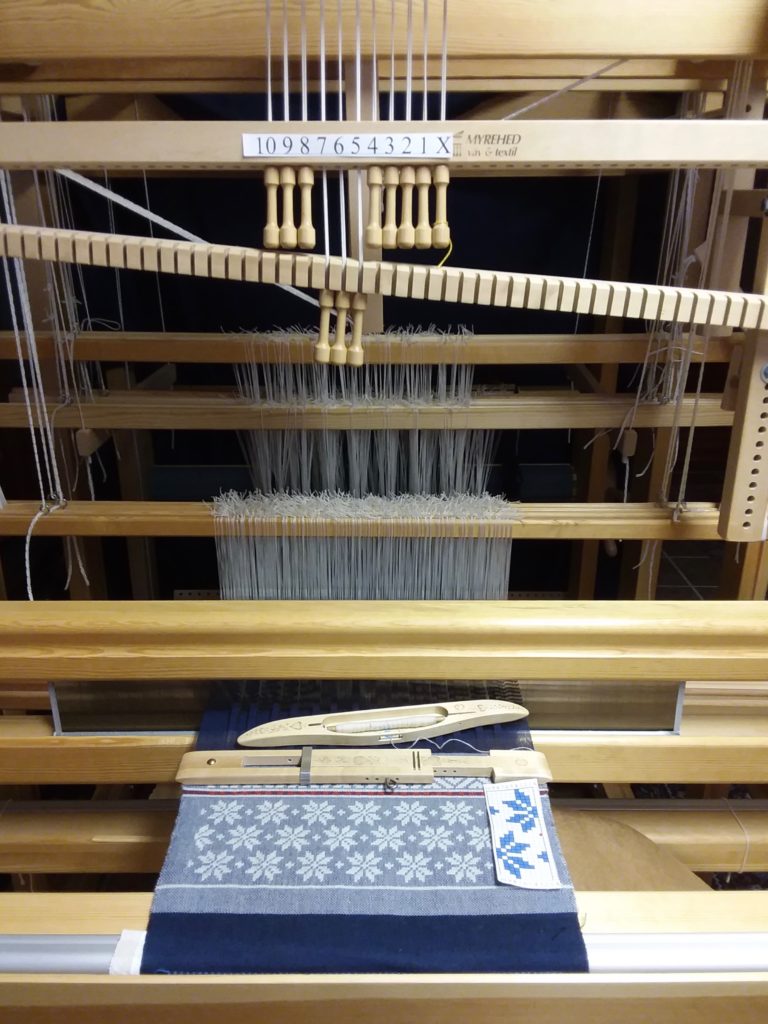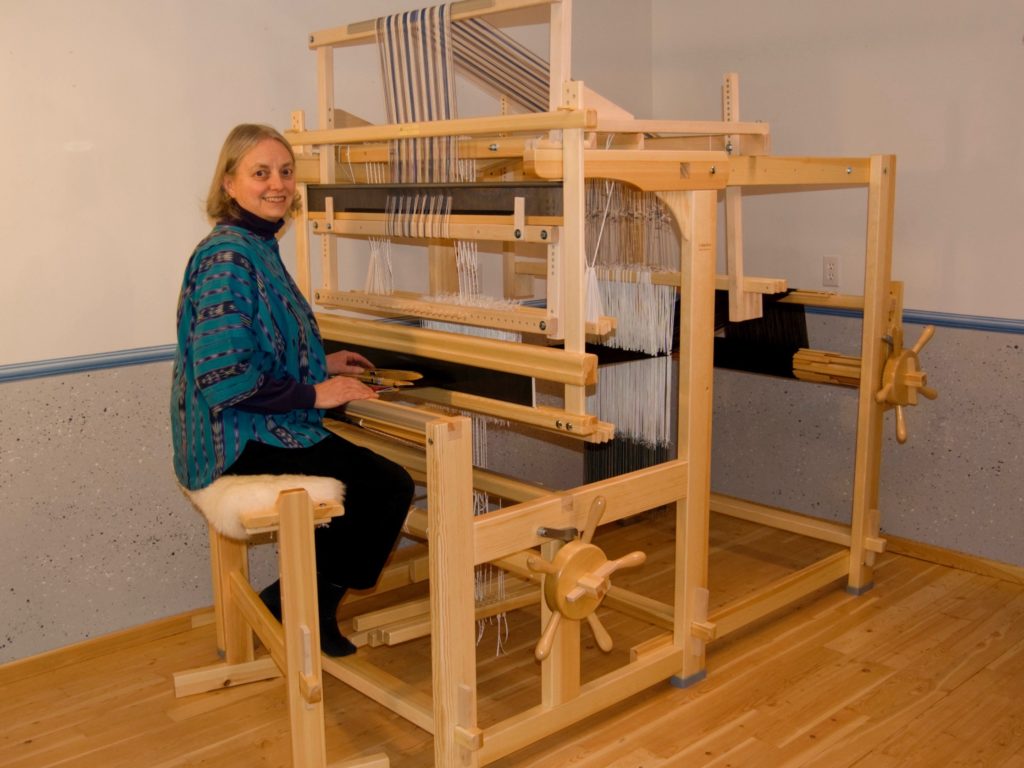You will be happy to hear that my drawloom is all dressed and set up. And it works! Every glide of the shuttle reveals exceptional magic in the cloth. Even better than I had hoped.


I had a few nervous moments while dressing this expansive loom, struggling with the pattern shafts. I learned the hard way that attempting a shortcut can mean taking much longer to complete the task. But, in the end, everything straightened out. Whew!





May your struggles turn into triumphs.
Your friend,
Karen
~What are your questions? Joanne has answers~
Janet, who is interested in drawloom weaving, asks these questions.
Joanne Hall provides the answers.
Q: I am trying to determine where to put a drawloom. How much floor space does a drawloom take? And how much additional area will I need around the loom?
A: These are good questions. Many weavers think about these things when they become interested in getting a drawloom.

Width –
For either the 100cm, 39.5-inch Ideal or the 100cm Standard, the width of the loom is 4 1/2 feet. Part of this is the ratchet wheel that sticks out 5 inches from the loom frame. The 120cm, 47-inch loom would be 8 inches wider.
Length with the loom extension –
Without considering space for the bench, the depth is 7 1/2 feet. The Ideal loom will have the same depth as the Standard loom. The Standard loom can be set out another 1 1/2 feet further, which may be nice if one wants to have 50 pattern shafts.
One occasionally needs to stand on the left side of the loom during warping. You need to stand at the back of the loom and walk along the right side the loom to move the ratchet wheels. When beaming the warp, it is good to have two or three feet of space either at the front or the back of the loom. During warping, you will need space at one side of the loom to move the pattern shafts and warping sticks in and out of the loom.
So, you need about 6 – 7 feet by 12 feet, but some get by with a few inches less.
Q: Can any Ideal or Standard loom be converted to a drawloom? What are the “must haves” to look for in a used loom that will be set up as a drawloom?

A: I frequently hear from weavers who send me photos of a loom and drawloom that they have found online. They want to know if $3800 is a good price for it. Often it is 40 years old and is being sold by the grandson, who cannot answer your questions.
If you are hoping to save a little by finding a used loom, it is best to purchase a used Glimakra Standard loom of any width and any age and then purchase the drawloom new. That way, you can get help when you need it. Plus, the Myrehed drawlooms have advantages over the older-style drawlooms.
I love my Myrehed drawlooms and once you try it, you will find that it is not so mysterious, but instead, a lot of fun to weave on.
Happy Weaving,
Joanne
